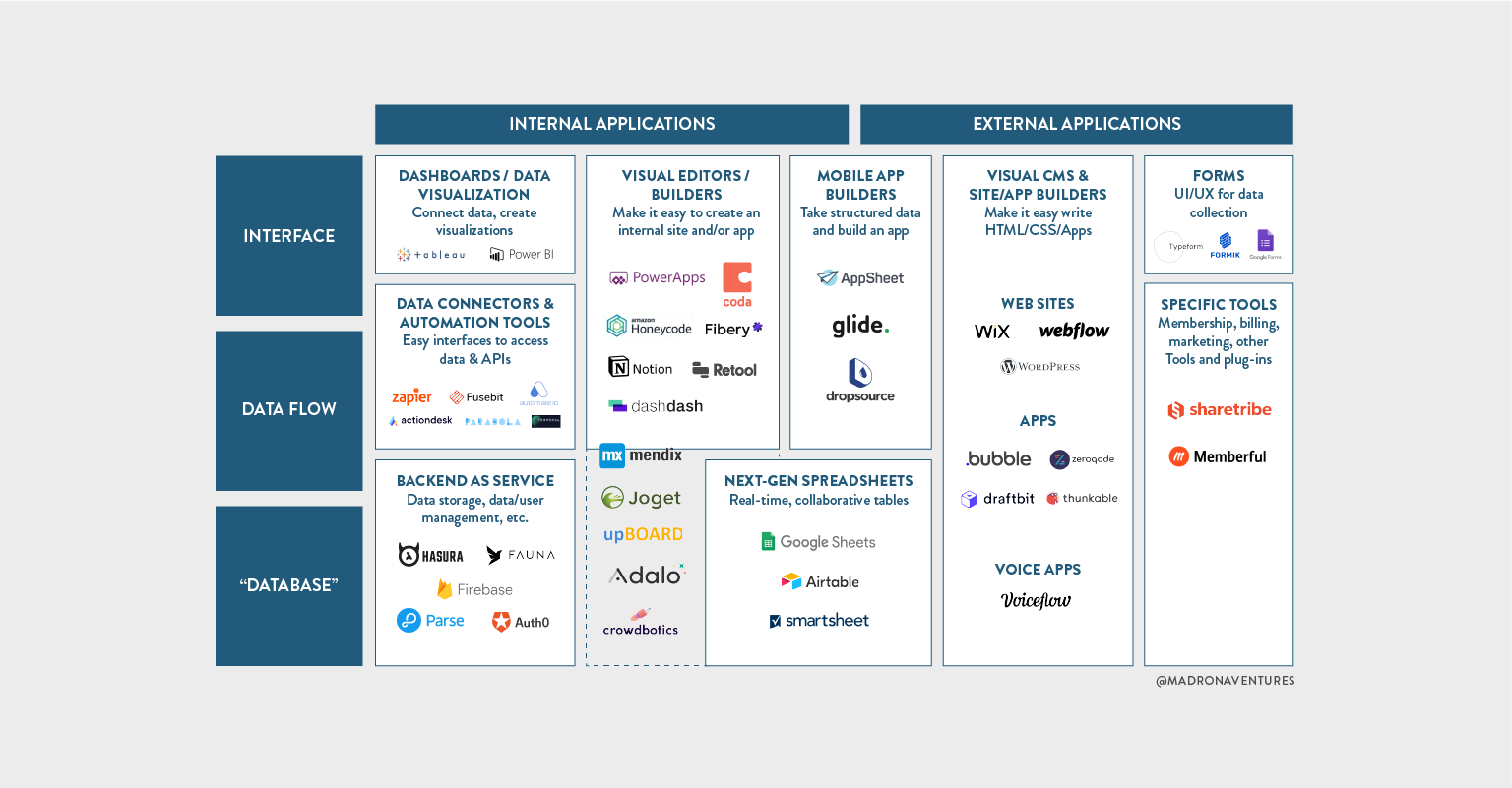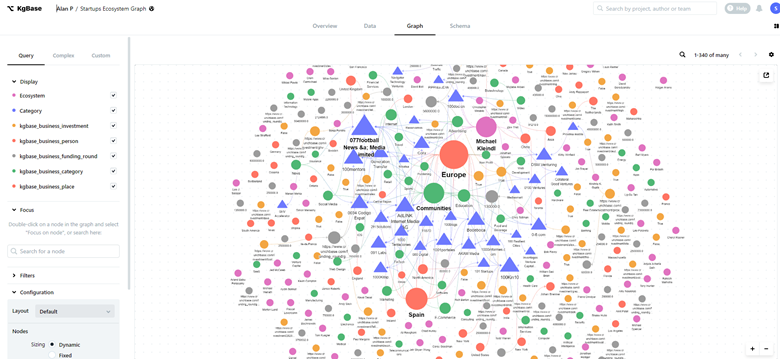Simple And Easy Open Platform Database Development Utilizing No-Code Innovation
Simple And Easy Open Platform Database Development Utilizing No-Code Innovation
Blog Article
Discover Exactly How Scalable Data Sources Can Be Used Without Coding to Enhance Your Service Operations
In today's busy service setting, the ability to take care of and analyze data efficiently is vital. Scalable data sources, specifically when coupled with no-code remedies, provide a transformative strategy that empowers non-technical individuals to streamline operations. By using devices that need no coding proficiency, companies can boost their operational capacities while reducing dependancy on IT sources. Nevertheless, the genuine inquiry lies in comprehending exactly how these remedies can be tailored to particular service demands and what potential hurdles may develop in their execution. Discovering these aspects can light up the course to functional quality.
Comprehending Scalable Data Sources
Scalable databases are vital for modern-day company procedures, permitting organizations to effectively take care of increasing volumes of information without giving up performance. These databases are created to expand and adjust to the altering needs of a company, making certain that they can deal with bigger datasets and even more complicated inquiries as business demands develop.
Recognizing scalable databases includes acknowledging their 2 key kinds: upright scaling and straight scaling. Upright scaling, or "scaling up," involves adding more power (CPU, RAM) to an existing server to enhance performance. Conversely, horizontal scaling, or "scaling out," entails adding much more servers to distribute the load, which commonly leads to higher versatility and mistake tolerance.
One more vital element is the design of scalable databases, which can be either non-relational or relational. Relational data sources, such as MySQL and PostgreSQL, are structured and utilize SQL for inquiries, while non-relational databases, like MongoDB and Cassandra, provide more flexibility with unstructured information.
Inevitably, recognizing scalable data sources is important for companies aiming to leverage information as a calculated possession, enabling them to remain competitive in a significantly data-driven atmosphere.

Advantages of No-Code Solutions
Unlocking the capacity of no-code options empowers companies to simplify procedures and enhance efficiency without the demand for extensive programs expertise. These systems allow non-technical users to produce, change, and take care of databases effortlessly, therefore equalizing accessibility to modern technology across teams.
One of the main advantages of no-code remedies is their speed of implementation. Services can quickly deploy applications and automate processes, substantially decreasing the moment invested in development cycles. This agility enables organizations to react without delay to market changes and customer needs, fostering an one-upmanship.
In addition, no-code systems lower dependence on IT divisions for day-to-day jobs, permitting technological groups to focus on more complex projects that require specialized skills. This change not just maximizes source allowance however likewise promotes innovation within the organization.
Cost-effectiveness is an additional benefit, as no-code remedies can decrease advancement and maintenance expenses. By minimizing the demand for coding know-how, business can harness the abilities of their existing workforce without the expenses of working with added employees.
Popular No-Code Database Tools
The rise of no-code solutions has led to the development of various database devices that accommodate organizations seeking efficiency and access. These tools empower customers with restricted technical expertise to develop, handle, and manipulate data sources seamlessly.

Caspio stands apart for its ability to construct internet applications without any type of coding. It enables companies to create durable data sources and deploy applications quickly, satisfying numerous market needs. Propensity offers effective data and user-friendly user interfaces administration capacities, allowing companies to build personalized applications tailored to their workflows.

Usage Situations in Service Workflow
Exactly how can companies leverage database devices to boost their operations? Scalable databases provide organizations with effective abilities to handle and assess information without the requirement for considerable coding expertise. These tools can simplify numerous business procedures, eventually resulting in improved performance and performance.
One popular use instance is client relationship monitoring (CRM) Services can utilize scalable data sources to track client interactions, choices, and comments, allowing personalized interaction and much better solution. By streamlining this information, groups can work together more successfully and respond to customer requirements in real-time.
Another substantial application is inventory monitoring. Business can use no-code database tools to check stock degrees, track shipments, and projection demand. This makes certain optimal supply levels, lowers waste, and reduces stockouts.
In addition, project monitoring can take advantage of scalable databases by permitting teams to handle jobs, due dates, and sources in a combined system. With real-time updates and data visualization, task managers can make educated choices.
Starting With Execution
Executing scalable data sources in business operations needs an organized method to make sure effective integration and use. The very first step is to conduct a thorough requirements analysis, recognizing specific company demands, information kinds, and expected growth patterns. This foundational understanding will certainly assist the selection of the appropriate database service.
Next, select a straightforward, no-code data source system that aligns with your operational goals. no-code. Lots of modern-day remedies offer intuitive interfaces, allowing non-technical users to take care of information properly. After picking a view it platform, develop a clear data design that describes exactly how data will be organized, accessed, and preserved
Training is vital; make sure that staff member are furnished with the required skills to utilize the data source. Take into consideration giving tutorials or workshops to familiarize staff with the system's functionalities.
Conclusion
In final thought, the assimilation of Full Report scalable data sources via no-code options presents considerable benefits for business procedures. Ultimately, leveraging these innovations can lead to enhanced efficiency and functional effectiveness, placing businesses for continual development in a competitive landscape.
One prominent no-code data source tool is Airtable, which incorporates the functionality of a spreadsheet with the power of a data source.How can services utilize database tools to boost their procedures? Companies can use scalable data sources to track customer interactions, choices, and responses, enabling individualized interaction and better service.Carrying out scalable data sources in company operations calls for a structured method to make certain successful combination and application.In verdict, the integration of scalable data sources with no-code options offers substantial benefits for organization operations.
Report this page